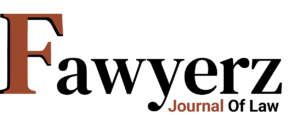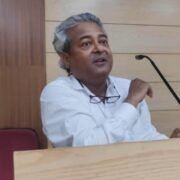Introduction
The need for the availability of effective medicine at an effective cost : Health problems has been a major issue for India since the pre-independence era. India as a country has always been in dire need of cost-effective medicine available to all. While effective medicine can not be invented without enough expenses on research and innovation. The companies which invest lots in the research and development of medicine certainly assert for reaping benefits of the same. This resulted in the evolution of the Patent Regime around the world, including in India.
It has always been a tough task for the government to strike a balance between the dire need of society to avail cost-effective medicine and protecting the interests of companies who spend a lot on research and innovation in inventive effective medicine for all. In this paper, I shall venture into the evolution of the Patent Regime in India from the perspective of the Pharmaceutical Industry.
Patent Regime in India, prior to the year 1947
The Indian Patent Regime was governed by the “Patents and Designs Act, 1911” in the pre-Independence Era, which allowed products to process patents for pharmaceutical preparation. As Britons were ruling India prior to 1947, the then Patents and Designs Act, 1911 was provisioned in such a way that it was more beneficial and suitable to the interests of companies based outside India, and it was not conducive to Indian companies. This was the reason, post 1947, when India became Independent, the Government of India constituted the Tek Chand Committee (1949–1950) and the Ayyangar Committee (1957–1959) and, according to the suggestion of these committees, necessary steps were taken to make the Patent Law suitable for Indians.
Patent Regime in India, post the year 1947
As per the recommendation of the afore mentioned committees , compulsory licencing was introduced in India. The Indian Government excluded Product Patents for food, medicines, and chemicals. Recommendations of both committees were crucial in the enactment of the Patent Act 1970, which was subsequently amended in the years 1999 and 2002. Prior to India becoming a signatory of the Trade-Related Aspects of Intellectual Property Rights (TRIPS) in the year 1995, the Patent Life in India was 5 years from the date of grant of Patent or 7 years from its filing, whichever was earlier. However, post India becoming a signatory of Trade-Related Aspects of Intellectual Property Rights (TRIPS), the Indian Patent Regime has seen the introduction of Exclusive Marketing Rights during the transitional phase. Patent Protection life was increased to 20 years from the priority date. Even product patents were re-introduced in relation to the pharmaceutical area. However, in order to discourage ever greening, Section 3 (d) was introduced in order to protect public interest. Other provisions have also been included in order to strike a balance between innovation and need.
The Provisions of Patent Act 1970, relevant to the pharmaceutical industry
Section 48 of the Patent Act 1970 grants the exclusive right to the Patentee to prevent others from using the Patent after its grant. Section 3 (d) of the Patent Act 1970 provides that the mere discovery of a new form of a known substance which does not result in the enhancement of known efficacy, is not an invention. This provision was introduced in order to discourage ever greening, unless there is proof of enhancement of the known efficacy. Section 83 (g) provides that patents are granted to make the benefit of the patented invention available at reasonably affordable prices to the public. Section 84 of the Patent Act 1970 provides for compulsory licences on the grounds inter alia that the patented invention is not available to the public at a reasonably affordable price. Section 102 of the Patent Act 1970 grants power to the Indian Government to acquire inventions and inventions. While Section 108 of the Act grants the right to the Patentee to institute a Suit for Patent Infringement. On the other hand, Section 107 of the Act empowers the Defendant to avail all the grounds as a defence available under Section 64 for revocation of a Patent. Not only this, Section 105 of the Patent Act 1970 also provides for a procedure, empowering a court to make a declaration as to non-infringement.
Noticeable Judgements which helped in shaping Patent Law in India with respect to the Pharmaceuticals Industry:
Now I proceed to discuss the landmark Judgements, which played an important role in the evolution of law in striking a balance between access to medicine and Innovation, post transitional Exclusive Marketing Right phase.
F. Hoffmann-LA Roche Ltd. Vs. Cipla Ltd. 2009 (110) DRJ 452 (DB)
This case pertains to an anti-cancer drug patented under No.196774 by Hoffman, which was sold under the brand ERLOTINIB. This case was filed against Cipla by alleging that medicine of Cipla, being sold under the brand ERLOCIP was amounting to Plaintiff’s afore mentioned Patent. The Hon’ble Single Judge refused to grant an interim injunction to the Plaintiff. This order was further challenged in Division Bench, which was again dismissed. The Hon’ble Division Bench relied upon Section 83 (g) of the Patent Act 1970, which provides that patents are granted to make the benefits of the patented invention available at reasonably affordable prices to the public. In this case, this medicine was very crucial for cancer treatment. While the plaintiff had yet to manufacture this medicine in India. This life-saving drug was being imported and sold by the Plaintiff for Rs. 3200/- per Tablet. This was considered to be too expensive. The Hon’ble Division Bench affirmed the dismissal of the interim injunction by a single judge, by observing that “The question of public access in our country to life-saving drugs assumes great significance and the adverse impact on such access which the grant of injunction in a case like the instant one is likely to have, would have to be accounted for.”
Novartis AG Vs Union of India :2013 (6) SCC 1
The Supreme Court of India refused to grant Novartis a patent in relation to the beta crystalline form of iMAtinib Mesylate in view of Section 3 (d) of the Patent Act 1970. Novartis tried to obtain a Patent in relation to the beta-crystalline form of iMAtinib Mesylate, which was meant to cure chronic myeloid leukaemia. As this was a new form of a known substance, namely iMAtinib Mesylate salt. Hence, Novartis was required to show enhanced efficacy. Novartis claimed that the beta-crystalline form of iMAtinib Mesylate exhibited better stability, better processability, and lower hygroscopicity with respect to known forms of salt. However, the court rejected this argument by observing that therapeutic efficacy, and not stability, processability, or hygroscopicity, are the relevant criteria for evaluating efficacy in relation to pharmaceutical medicine. As in this case, Novartis failed to prove any enhanced therapeutic efficacy. The court refused to grant a patent to Novartis.
Merck Sharp & Dohme Corp. Vs Glenmark Pharmaceuticals Ltd.
(2015:DHC: 2712-DB)
Merck filed suit against Glenmark for the patented product SITagliptin (Indian Patent No. 209816). The patent suit concerns this product, which lowers blood sugar levels in Type 2 Diabetes Mellitus (“T2DM”). A single judge refused to grant an injunction in favour of Merck. Later, in Appeal, the Division Bench granted an injunction in favour of Merck. Though the Division Bench observed that “the observations of the Justice Ayyangar Committee, quoted with approval by the Supreme Court in Novartis (supra), that “Patent systems are not created in the interest of the inventor but in the interest of the national economy” still granted injunction as there was prima facie evidence of better therapeutic effect.
Cipla Vs Novartis 2017 2017 (70) PTC 80 (Del)(DB)
This judgement came in an Appeal filed by Cipla against the Judgement of Hon’ble Single Judge, whereby Cipla was restrained from infringing its patent (IN 229051), granted in relation to medicine for curing chronic obstructive pulmonary disease, COPD treatment. The Hon’ble Division Bench affirmed the order of the Single Judge. Here Cipla was unable to raise any credible challenge to the Plaintiff’s Patent. In this case also, Cipla tried to take recourse to the public interest argument. However, Novartis contested this argument by submitting that enough imports were being made which would satisfy the requirements of the COPD. The court reiterated that manufacturing of the product in India was not necessary for the working of a patent. Though Hoffman’s manufacturing facility was based in Switzerland, it was a state-of-the-art facility and was capable of meeting the demand in India. The Hon’ble Division Bench rejected the argument of Cipla of public interest and protected the Patent of Novartis, thereby striking a balance between right of patent holder and public interest.
Bristol-Myers Squibb Co. Vs. Indoco Remedies Ltd (Judgement dated
24.12.2019 passed by Hon’ble High Court of Delhi in CS Comm 731 of 2019)
This case pertains to a patent (IN 209816) on Apixaban (Eliquis), which covers a specific class of compounds, including Apixaban, a Factor Xa inhibitor used as an anticoagulant. Though Indoco urged non-infringement and public interest, the same was declined by the High Court of Delhi and ultimately an injunction was granted. During the COVID period, Indoco approached the court to seek permission to sell 58,000 strips of APIXABID prior to the Single Judge’s injunction and sought permission to sell these strips amidst the urgent need for medications during the COVID-19 pandemic. The Court again declined to grant any concession to Indoco in the Judgment Indoco Remedies Ltd Vs Bristol-Myers Squibb Co: Aironline 2020 Del 1280 by observing that the argument of Indoco regarding the lack of medicine appeared to be artificial and Indoco was not granted any benefit to the Public Interest argument.
Astrazeneca AB and another Vs. Intas Pharmaceuticals Ltd. 2021
SCC OnLine Del 3746
In this case, the Hon’ble Division Bench dismissed 9 Appeals which were filed by Astrazeneca against denial of interim injunction by Single Judge in Suits filed against Intas Pharma, Alkem Laboratories, Zydus Healthcare, Eris Life Sciences, USV Private Limited, Torrent Pharmaceuticals, MSN Laboratories, Micro Labs and Ajanta Pharma. 9 Suits were filed by Astrazeneca seeking relief of permanent injunction pertaining to its Patent comprising the compound ‘Dapagliflozin’ (‘DAPA’), which was the subject matter of Indian Patent No.205147 (‘IN 147’) and Indian Patent No.235625 (‘IN 625’). The moot point which was to be adjudicated in this case was whether DAPA, which, according to the plaintiffs, is covered in 147, stands disclosed and whether IN 625 was disclosed in 147?
This was the case with the Genus Patent and Species Patent. The Hon’ble Division Bench, after going through the claims and specifications of IN 625′ and IN 147, held that IN 625′ was already disclosed IN 147. Thus IN 625′ was species Patent, while IN 147 was Genus. This fact was further strengthened by the fact that, while asking for infringement of the Patent for the DAPA product, the Plaintiff invoked both the IN 625 and the IN 147 Patent. This was the reason why the injunction was held to be rightly declined. The court also noticed that it cannot be lost sight of, that the inventors of both, IN 147 and IN 625, are the same. According to Hon’ble Division Bench, The tests of “obvious to a person skilled in the art” and “anticipation by publication” and “use before the date of filing of patent application with complete specification”, in the context of an earlier patent and its specifications, in our view, have to be different, when the inventor of both is the same. In the present case, the Plaintiff has failed to demonstrate any technical advancement or difference in efficacy of the new products or any economic significance of the new invention claimed.
Moreover, Plaintiff’s stance before the USPTO with respect to patents equivalent to the Indian Patent further diluted the case of Plaintiff. This case is one of the Landmark Judgments dealing with GENUS PATENT and SPECIES PATENT, where the Court applied stringent tests when Inventor one.
Boehringer Ingelheim Pharma GmbH. Vee Excel Laboratories Pvt. Ltd.
(2023:DHC:2249)
Recently another Landmark Judgement came from the Hon’ble High Court of Delhi pertaining to the Genus Patent, Species Patent and Ever greening. Boehringer filed six suits against Vee Excel, Alkem Laboratories, Micro Labs, and Natco Pharma seeking relief pertaining to infringement of Indian Patent IN 243301 (IN 301) and IN 227719 (IN 719) in relation to a product, namely LINAGLIPTIN and used for used in the treatment of type 2 diabetes. In this case also a similar issue of the Genus Patent, Species Patent also crept in. The Plaintiff invoked both the Suit Patents, there by indicating the fact that (IN 719), being a species Patent, was covered under the earlier (IN 301) Genus Patent. After the expiration of the Genus Patent, Boehringer sought to extend the Patent protection by way of species Patent, which was negated by the Hon’ble Single Judge as it was a case of evergreening by the Plaintiff. Accordingly, relief of the interim injunction was declined. Aggrieved by the denial of the injunction, Boehringer filed an appeal before the Hon’ble High Court of Delhi. However, the same was withdrawn as, during the pendency of appeal proceedings, the life of the subject matter patents came to an end.
Striking a Balance between Innovation and the need for the availability of
effective medicine at an effective cost
The Patent Regime in India has seen remarkable changes from the pre-independence era to recent times. Post implementation of the Exclusive Marketing Rights phase and implementation of the current Patent, the Pharmaceutical Industries have seen multiple wars between MNCs and Indian Industries. On the one hand, the government and courts have to ensure that MNCs should not indulge in the act of ever greening, while also ensuring that Indian companies can not take shelter from public shelter and defeat the innovation and research process. The Indian Government and Court have played an active role in striking a balance between the need for innovation and the need for the availability of Effective Medicine at an effective cost. On the one hand, every greening has been discouraged, while, on the other hand, Indian companies are not allowed to take shelter from the public interest in not fulfilling the criteria as envisaged in the Patent Act 1970. There are ample safeguards which have been provided in the Indian Patent Act 1970 to meet the balance and has been successfully interpreted and implemented by the Indian Courts.
Ajay Amitabh Suman is an Advocate with over 22 years of experience in Intellectual Property Rights, practicing primarily before the Hon'ble Delhi High Court. An alumnus of CampusLawCentre, University of Delhi, I currently serve as a Patent and Trademark Attorney at United & United.
He has authored over 800 legal articles published on platforms such as LegalServiceIndia, LawyersClubIndia, Bar and Bench, Legal Era, Live Law, Spicy IP, SCCOnline Blog, and LegalDesire.
Additionally, more than 1,500 of his stories, poems, and essays—written in both Hindi and English—have been featured in TimesofIndia, NavBharatTimes, Dainik Jagran, AmarUjala, and other renowned publications.
Patent & Trademark Attorney
- This author does not have any more posts.


